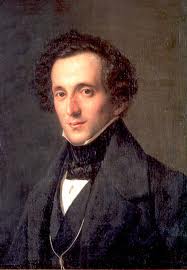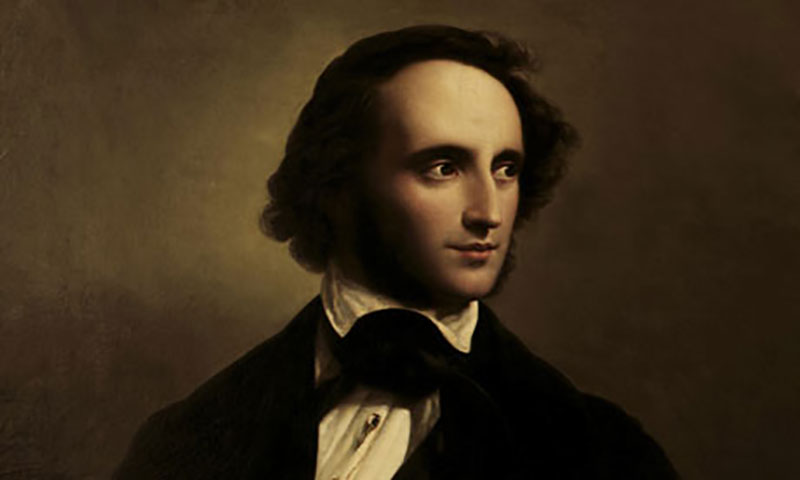Felix Mendelssohn Bartholdy: A Complete Biography
Introduction
Jakob Ludwig Felix Mendelssohn Bartholdy (1809–1847) was one of the most prominent composers of the early Romantic period. Known for his refined, lyrical style and deep reverence for classical traditions, Mendelssohn was also a conductor, pianist, organist, and music educator. His works include symphonies, concertos, oratorios, chamber music, and piano compositions. Mendelssohn played a crucial role in the 19th-century revival of interest in Johann Sebastian Bach’s music and was a founding figure in institutionalizing music education in Germany. Despite his relatively short life, Mendelssohn’s music left a lasting legacy that continues to influence classical music today.

Childhood (1809–1825)
Felix Mendelssohn was born on February 3, 1809, in Hamburg, Germany, into a wealthy and intellectually vibrant family. His grandfather was the eminent Jewish philosopher Moses Mendelssohn, and his father, Abraham Mendelssohn, was a successful banker who converted the family to Christianity, adding “Bartholdy” to the family name to signify the change.
From an early age, Felix showed extraordinary talent. He received musical training from his mother and later studied under Carl Friedrich Zelter, a key figure in Berlin’s musical life and a devoted admirer of Bach. Zelter introduced young Mendelssohn to the works of Bach, Handel, and Mozart—foundations that deeply influenced his compositional style.
By the age of nine, Felix was already performing in public and composing music. He wrote twelve string symphonies during his teenage years and staged his own operas at home with the help of his siblings, especially his equally talented sister, Fanny Mendelssohn.
Youth (1825–1830)
Mendelssohn’s teen years were marked by astonishing productivity. In 1825, at age sixteen, he composed one of his early masterpieces, the Octet in E-flat major, Op. 20, a work of remarkable sophistication and energy. Just a year later, he composed the Overture to A Midsummer Night’s Dream, Op. 21, which would later be expanded with additional music for Shakespeare’s play, including the famous “Wedding March.”
In 1829, Mendelssohn conducted a seminal performance of J.S. Bach’s St. Matthew Passion in Berlin—an event widely credited with sparking the Bach revival in the 19th century. This monumental concert reintroduced Bach’s sacred music to the public after it had largely fallen out of fashion and revealed Mendelssohn’s scholarly and historical sensibilities.
This same year marked the beginning of his grand tour of Europe. He traveled to England, where he quickly won favor with audiences and critics. His travels also took him to Scotland, which inspired his Hebrides Overture and later his Scottish Symphony.
Adulthood (1830–1847)
The 1830s and 1840s were Mendelssohn’s most productive years. He became a favorite in Britain, where he conducted orchestras and was warmly received by Queen Victoria and Prince Albert. In 1835, he was appointed conductor of the Leipzig Gewandhaus Orchestra, transforming it into one of Europe’s premier ensembles.
Mendelssohn also played a vital role in shaping music education. In 1843, he founded the Leipzig Conservatory (now the Hochschule für Musik und Theater “Felix Mendelssohn Bartholdy”), the first major conservatory in Germany, where he served as director and teacher.
In 1837, he married Cécile Jeanrenaud, with whom he had five children. Though his life appeared to be one of professional and domestic harmony, he was often burdened by the pressures of public life, anti-Semitic criticism, and overwork.
Major Compositions
Mendelssohn’s oeuvre is extensive and includes works in almost every major genre of the time.
Orchestral Works:
- Symphony No. 3 in A minor (“Scottish”), Op. 56 – Inspired by his visit to Scotland, this symphony evokes rugged landscapes and medieval castles.
- Symphony No. 4 in A major (“Italian”), Op. 90 – A bright, energetic work reflecting his time in Italy.
- Hebrides Overture (“Fingal’s Cave”), Op. 26 – A tone poem capturing the majesty of the Scottish coastline.
Concertos:
- Violin Concerto in E minor, Op. 64 – One of the most popular violin concertos of all time, known for its lyrical beauty and innovative structure.
- Piano Concertos No. 1 and 2 – Showcasing Mendelssohn’s pianistic brilliance.
Choral and Vocal Music:
- Elijah, Op. 70 – A grand oratorio that demonstrates Mendelssohn’s mastery of biblical drama and counterpoint.
- St. Paul, Op. 36 – Another important oratorio reflecting his Lutheran faith.
Piano and Chamber Music:
- Songs Without Words – A series of short lyrical piano pieces, ideal for amateur and professional pianists alike.
- Octet in E-flat major, Op. 20 – Written when he was only 16, it is still hailed as a chamber music masterpiece.
- String Quartets – A significant contribution to the genre, balancing classical form with Romantic expression.
Death (1847)
The death of his beloved sister Fanny Mendelssohn in May 1847 devastated Felix. He was overwhelmed by grief and physically exhausted from years of hard work. In November of the same year, he suffered a series of strokes and died on November 4, 1847, at the age of 38 in Leipzig.
He was buried in Berlin’s Trinity Cemetery beside Fanny. His death was widely mourned across Europe, especially in Britain, where he had become a cultural icon.
Conclusion
Felix Mendelssohn Bartholdy’s life was brief but brilliant. He managed to bridge the Classical and Romantic periods with elegance, intelligence, and emotional depth. While he upheld the ideals of clarity and form, he also infused his music with poetic inspiration and rich expressiveness.
As a conductor, he reshaped orchestral performance. As a composer, he wrote enduring works still celebrated in concert halls today. And as a cultural leader, he advanced the role of music education and historical preservation. Mendelssohn remains a shining figure in Western classical music—both for his achievements and for the potential he still held at the time of his untimely death.

Comments are closed